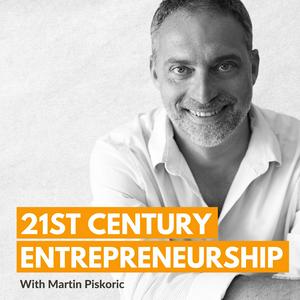Jake Stahl: Are You Missing Hidden Decision Signals?
Jake Stahl is a psychology-trained communication strategist, NLP master practitioner, and global trainer who has coached over 10,000 people across six countries—and we spoke about how people actually make decisions. His core premise is simple: every person has two profiles, the polished public one and the internal one “that responds to fear and biases and happiness,” and only that second profile makes decisions. Jake teaches leaders, founders, and sales teams how to communicate directly to that internal profile by learning to recognize the caption someone is “saying without saying.”A turning point in his work came from moments like a Zoom call where a prospect outwardly showed interest but subconsciously signaled discomfort by twisting her wedding ring. Jake noted that “her voice was saying we want to do business, her caption was saying you touched a scar,” which forced him to reframe on the spot. His method is a structured process—recognize the signal, identify the trigger, and reframe the moment—to regain trust and “own the room.” He applies the same lens to CEOs who look away, tap their pen, or turn their feet toward the door; every signal is data, and his rule is clear: call it out, never ignore it.Practically, Jake breaks communication into micro-behaviors that shape presence long before words do. He explains why “confidence is the precedent to results,” not the reward, and why people fail when they wait to feel ready. He also offers concrete tools—like the three elements of a trustworthy headshot: a genuine smile, upright or forward posture, and a slight head tilt that subtly signals trust.For anyone who wants to become unforgettable instead of overlooked, Jake’s approach provides a step-by-step way to read signals, control presence, and communicate to the part of people that actually decides.Key takeawaysSpeak to the internal profile that makes real decisions.Read subtle signals: gaze shifts, pen tapping, foot direction.Call out signals directly to regain attention and trust.Recognize triggers and reframe quickly to save the interaction.Build confidence through micro-behaviors, not results.Use headshot cues—smile, posture, head tilt—to pre-signal trust.


